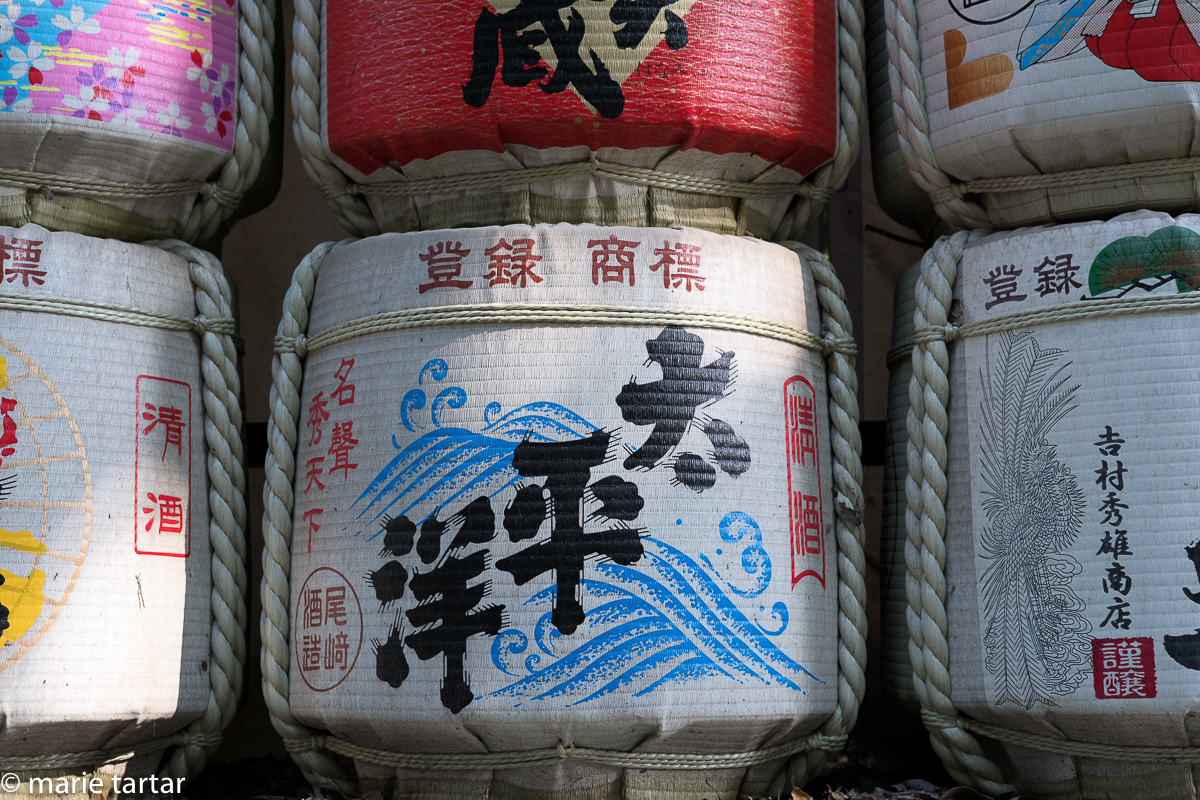
Thursday, November 3, 2016:
After taking leave of Kanazawa, it was time to pick up the pace and switch gears: on to Tokyo, MOPA-style. This would be our second longer-than-overnight stay in the bustling metropolis, a huge and populous city by any standard; the first, in April, 2014, started to peel back the layers of this multi-dimension onion. Earlier in the year, we had passed through, on our Kyoto-in-springtime-or-bust cherry blossom trip. We made it to Tokyo on our third trip to Japan. That was due in part to the family living in Chubu, central Japan, north of Nagoya, and due in part to a romantic notion of wanting to see the “traditional” Japan of temples, geishas, and gardens. Of course, Japan has many facets. Tokyo has only pockets of traditional Japan, having been levelled first by the Kanto earthquake of 1923 and later being left in ruins by the Allied firebombing of WW II. (A book I’m reading concurrent with writing this does an admirable job of bringing to life the destruction and ravages of WW II on the lives of Tokyoites : Gail Tsukiyama’s The Street of a Thousand Blossoms). So, Tokyo is new Japan at its most frenetic, much of it constructed after WW II, with only small sections remaining which preserve a sense of a more traditional Japan. That said, there is much to like: it’s lively, energetic, with interesting contemporary architecture, more restaurants than could be sampled in a lifetime, all linked together by a comprehensive subway and train system.
Arriving in Tokyo late morning, we headed to Meguro to drop off our luggage. Our accommodation for this stay was architect Vincent Yueh-designed Mita House. I had tried unsuccessfully to book this property through Boutique Homes on our prior trip, so was thrilled to find it available on VRBO. Most of the MOPA participants were staying at the Palace. Even though this 4 bedroom house was much bigger than we needed, it was a good value compared to a pricey hotel like the Palace, less expensive and much more space. I also liked the idea of living in a completely different neighborhood than on our prior stay, in Asakusa.
The house itself is a contemporary board-formed concrete structure, with lots of glass. I liked the familiar furnishings, including a Noguchi print and Wegner wishbone chairs. It could have benefited from some touch-up paint, but overall was quite comfortable and very well located, between the Ebisu and Meguro stations.
Freed of our luggage, it was time for lunch! A short walk away in Ebisu were many choices. We happened on a really delicious high-end-for-okinomiyaki restaurant, Hana Chibo Ebisu Garden Place , an elevator ride up in the Ebisu Garden Place Tower. Although we didn’t know it, it turns out this is but one outpost of a family (62 in Japan and expanding overseas in Asia) of Osaka-style okinomiyaki restaurants throughout Japan. This is great to know, as based on that lunch, I would happily return to work my way through the menu! We sat at the counter and shared 2 delicious variations of okonomiyaki, including a negiyaki, with green onions. Okinomiyaki is probably one of the most popular, comfort food Japanese meals which is not that well known outside of Japan. It is a savory treat, cooked on a griddle, with the name meaning “what you want” or “as you like it ” and yaki meaning cooked or grilled. There are a lot of variations but most have in common a batter base, made from okinomiyaki flour, water and eggs, griddle cooked with toppings, typically cabbage, tempura bits, sometimes thin-sliced pork belly, sometimes seafood, usually seaweed or bonito flakes.
We walked into a surprise reunion in the Nezu Museum. Friends from MCASD (Catherine, Bob, Hugh, Katherine, James and Jill, Faye) were milling in the lobby, just concluding their visit to this jewel box of a museum, designed by Kengo Kuma. This was a destination we hadn’t been able to squeeze into our prior stay in Tokyo. Our late afternoon arrival saw the surprisingly large and lush garden highlighted in a gorgeous golden glow.
When the light wound down, we received a Whatsapp text from MOPA staffer Stephanie saying Takeshi Shikama would be showing images in the lobby of the Palace Hotel before the dinner there, so off to the Palace we headed. We both loved the very first image we saw, a glowing golden water droplet on a lotus leaf.
Dinner at the hotel’s Amber Palace restaurant was a pan-Asian set menu with an appalling and distinctly unappetizing offering : shark’s fin soup with Mont St-Michel mussels. I have nothing against mussels, but shark’s fin soup? Ugh, ugh, triple ugh, a dish based on sacrificing an apex predator, rendering it unable to swim and doomed to die, only to harvest its fins?
Friday, November 4, 2016
I awoke, mentally writing outraged protest letters to the Palace Hotel about the shark’s fin soup on their menu. I did actually write them later, once back at home, and received a polite reply from the manager, pleading their case that the hotel has only so much control over the independently owned restaurant, but rest assured my comments would be passed on to the restaurant management. I can only hope with sustained commentary that will ultimately have an effect.
We had only a short walk back to Yebisu Garden Place to meet the group at TOP, the Tokyo Photographic Art Museum, for a show by an artist whose work we’ve admired for years, Hiroshi Sugimoto. Not only was this show on 2 floors specially designed by the artist to celebrate the museum’s reopening after renovation, but the man himself was there to greet us.
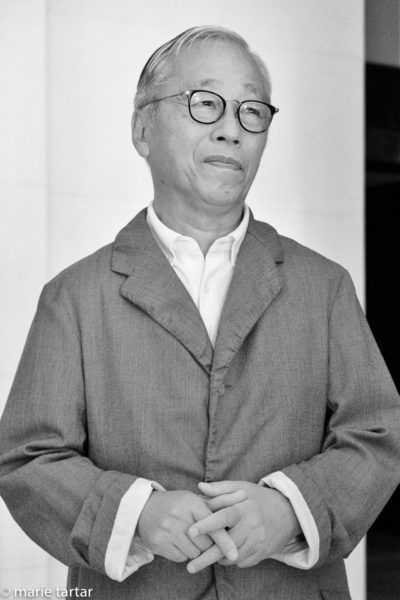
The always fascinating contemporary artist, Hiroshi Sugimoto, at TOP (Tokyo Museum of Photography), reopened after a 2 year closure with a 2 floor show of Sugimoto’s theaters, Buddhas, and a multi-room diorama, Lost Human Genetic Archive
Sugimoto proved to be charming and urbane, thoughtful and inspiring. On one floor were Buddhas from Sanjuusangendo, as well as his ruined empty theaters, in which glowing white screens attest to the seminal movies screened there, during showings in which the shutter is left open for the length of the screening. Almost 3 years before (January 2014) in Paris, we saw a video installation called Accelerated Buddha of the Sanjuusangendo Buddhas at Fondation Pierre Bergé-Yves Saint Laurent, in which images of the Buddhas were projected in alternation, slowly at first, then faster and faster, until the Buddhas appeared to be running full tilt into an eventual frenzy of annihilation.
The heart of the show was Lost Human Genetic Archive, a beautiful, resonant and amazing tableaux of emotive artifacts, juxtaposed with Sugimoto’s photographic work, evoking a post-apocalyptic afterworld. A detailed text accompanies these vignettes, which begins with Sugimoto’s riff on Camus: “Today the world died. Or maybe yesterday.” Having reread L’Etranger (The Stranger) by Camus last year with my book group (prompted by the publication of its literary inverse, The Mersault Investigation by Kamel Daoud, first published in 2013, translated into English in 2015), the reference was fresh in my mind: “MOTHER died today. Or, maybe, yesterday; I can’t be sure.” (Although an interesting New Yorker article from 2012 argues, persuasively, that the best English equivalent would be: “Today, Maman died”.)
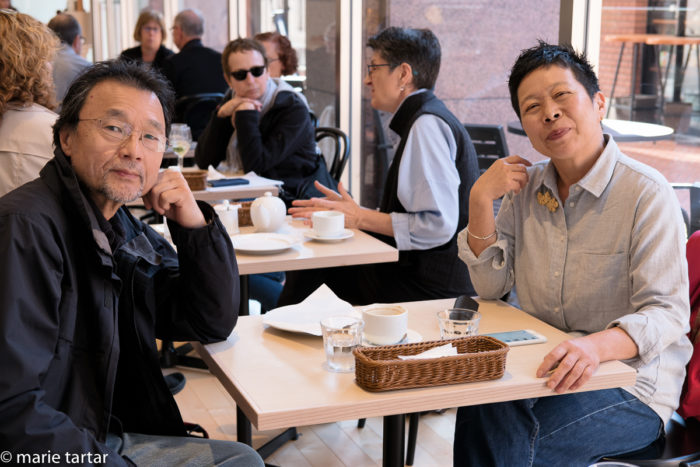
Platinum photographic artist Takeshi Shikama, and his wife and translator, Yukiko at Maison Ichi, at TOP, Tokyo
After a coffee break at Maison Ichi, most of the group opted for our plan of hopping onto the JR Yamanote train north 2 stops to Harajuku, alighting into the forested preserve of Meiji shrine, our first visit.
It was filled with families, bringing resplendently kimono-attired and coiffured tots to the Shinto shrine to celebrate Shichi-Go-San, a rite of passage celebration during which prayers are offered to Ujigami, the Shinto god, for the good health and well-being of children. Shichi-Go-San means 7-5-3. Odd numbers are considered lucky. Traditionally, Shichi-Go-San is celebrated on November 15 (an especially auspicious number, being the sum of 7+5+3), but is often observed on the weekends around November 15. Three and seven year old girls and three and five year old boys are dressed in their finest for the occasion. The roots of this practice seem to date back to earlier eras in which infant mortality was much higher, leading to a practice in which children were not notated in family registers until they reached the age of 3.
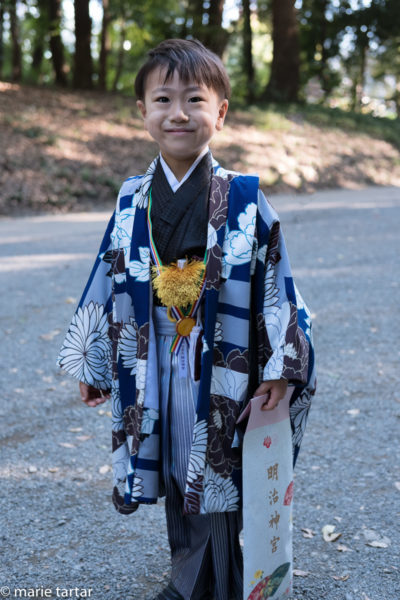
All dressed up for 7-5-3 trip to Meiji Shrine, Tokyo; in the long bag is probably chitose-ame (thousand year candy), a long red and white candy, symbolic of longevity and health

Shichi-Go-San celebration at Meiji Shrine in Tokyo; taking family photographs has become an integral component of the modern celebration
From there, we wandered down Omote-sando, the zelkova (Japanese elm) lined Rodeo Drive of Tokyo and a street punctuated with contemporary architectural landmarks, outposts for fashion’s biggest names, making it as far as Omote-sando Hills before dispersing into small groups for lunch. Even Omotesando Hills is an architectural landmark, by Tadao Ando. Steve and I, and Tere and Tom at the counter, lunched at a cheerful small place inside the huge shopping center, called Kyo-oyasai-bar. My rudimentary Japanese translates this restaurant’s name into today’s (kyo) vegetables (yasai, with an honorofic “o” thrown in). This was a lucky find, proving to be an outpost of “missionary of the farm” celeb chef Akira Watanabe. I look forward to tracking down and trying other branches. We both had the soba with tempura set lunch. Tom and Tere, pleading fatigue, decamped for the hotel by taxi afterwards, while we continued east on Omote-Sando, making it as far as Pleats Please. After I tried on a few pieces there, we left, ducking into the Men’s shop opposite, just for a “look”. The rest of our time and a good chunk of money evaporated in the next hour as we emerged with several new pieces for Steve. We did leave just enough time to use up our hard-earned loyalty card discount on a scarf-like piece for me down the street at yet another Issey Miyake post.
We hopped into a cab to head to PGI gallery to meet Takashi Arai, a handsome, youngish , interesting and thoughtfully obsessive artist who uses one of the oldest and most chemically dangerous of the photographic techniques, making contemporary daguerreotypes.
We met up with Tokyo friends, Mari and Hideo, at a tiny mom and pop sushi restaurant they have been frequenting for 30 years, Tobikiri Sushi, operated by Mr. and Mrs. Hosono (telephone 03 (3533) 3997). In a way, we have MOPA to thank for these friends, who we met them at breakfast in our Paris hotel 2 years before while on a trip with MOPA for Paris Photo, the annual November art fair.
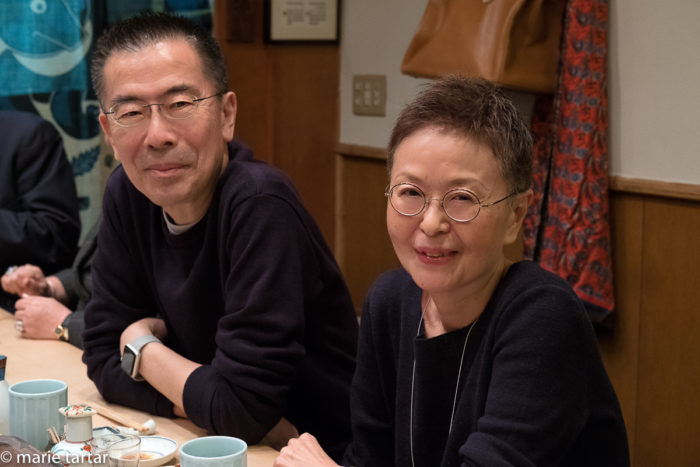
Gracious hosts and friends in Tokyo, Hideo and Mari, at Sushi Tobikiri in Ginza, a 30 year favorite of theirs! We hope to lure them out to California someday to repay their hospitality
Tobikiri Sushi is a tiny place, literally an L-shaped sushi bar, delicious and fresh and completely off the radar for non-Japanese.
This is no surprise, Tokyo being well known as the gastronomic capital of the world, glittering with Michelin stars, having an astounding (at least) 80,000 restaurants, compared with 15,000 in New York and 6,000 in London, according to the website, Japan by the Numbers (it may be even higher, according to Michelin, at 160,000?!).
Saturday, November 5, 2016
Our day started with a fashionista frenzy. The night before at dinner, Mari mentioned they would be going the following morning to the Issey Miyake sample sale. It started at 9:30 am the following morning, which fit neatly before our first gallery appointment. We had arrived at our dinner the night before laden with bags from Issey Miyake Men, which might have signaled to Mari our interest in this textile experimenter extraordinaire. We quickly cooked up plans for us to be at Hamamatsucho Station at 9 am and they would pick us up in their “very small” car. Exiting the train, I suddenly realized we didn’t discuss at which exit to meet.
“Uh oh,” I was thinking. There was a north and a south exit. We picked the one with the taxi stand and were relieved to see Mari’s smiling face as we approached it. The “very small” car was a Mini Cooper, which seemed a perfect match to stylish and compact Mari, who has short hair and an energetic appearance. Hideo was sick, so it was the 3 of us and a hoard of colorfully dressed Japanese women, as well as a smattering of Westerners and men. After gathering in a vestibule, the crowd was directed outside and organized into velvet-roped lines. Mari was parking the car, and I didn’t initially realize that one had to present oneself to an official and have the official invitation stamped in order to get in the line.
We ended up in the second of two large queues, but once the first went in, our line quickly followed. It was all very organized and quite civilized, if intense and directed. We quickly separated, arranging to meet back after the cashier. As we entered, we were handed large clear bags, which the focused shoppers quickly filled up with a colorful array of Miyake’s pleated and innovative garments.
Only in the line for the dressing room was there much chit-chat, with most of the crowd very focused on scurrying through the numerous racks as quickly as possible. The dressing room itself was a big communal affair, with full length mirrors set up side by side in rows, like I’ve heard about the legendary Loew’s. We were on deadline, so no time for dickering, choices had to be made and quickly! I tried not to succumb to sample sale fever and tried to ask myself if I would buy the items I considered at full price or was this analogous to auction fever? Steve once again outdid me in the Miyake arena, but the sale discounts were substantial enough that financial ruin is not eminent. But, this cultural event cum shopping extravaganza did tip the balance on the have-to-break-out-the-Plier-folding-extra-suitcase-or-not dilemma.
Mari whisked us up to Ginza to Gallery Koyanagi. Amazingly, we made it there on time for our 11 am rendezvous with the group, and were the first to arrive at the spare, Sugimoto designed space. A screen version of one of his dioramas held court. While we were waiting for the others, the elegantly ponytailed and black-clad director showed us images by an avant- guard, now dead, Japanese photographer who turns floral photography on its head. One of the images, of tulip petals packaged together, strongly evoked a slab of beef. We were to see validation of her characterization of Yukio Nakagawa’s work as au courant very soon, as a huge installation of this very image at Comme des Garçons, the very next evening.
The plan was for a sushi lunch, but Larry, Stephanie and Dwight were heading off for soba, so we joined them. The gallery director endorsed the noodles on the restaurant floor of Matsuya.

Hokoten (pedestrian heaven) fills the streets of Ginza in Tokyo on a fine November weekend afternoon
When we emerged on the street, hokoten or “pedestrian paradise” was in full force. The phrase is derived from hokousha=pedestrian, with ten=sky or heaven and tengoku=paradise. Chuo-dori is closed during weekend afternoons, allowing pedestrians unfettered access to the street. The weather was wonderful, sunny, crisp and cool, wonderfully comfortable. The crowd was dressed for lunch and upscale shopping.
Of course, there are two sides to every story. While it was clear that Tokyo residents reveled in hokoten, Mari told us on the ride over that Ginza residents are not happy to have their streets overrun with pedestrians.
Two alternative approaches to contemporary “nature photography” awaited us at Ippodo Gallery. Takashi Tomo-oka creates beautifully minimalist photographic works, highlighting the sculptural properties of his floral and botanical subjects, which he cultivates and collects himself, emphasizing and isolating them against a white ground. Some of these works were beautifully presented in a traditional scroll or screen form, as an alternative to conventional framing.
On another floor, incense was burning and the lights were low, recapitulating the atmosphere of the historic traditional Japanese structures being depicted, on which Kenji Wakasugi uses his own nature photographs to digitally embellish the fusuma (sliding screen doors).
Yukiko and Takeshi Shikama had mentioned a famous tonkatsu restaurant to us, Tonki, in Meguro, our neighborhood for this trip. Takeshi had even drawn me a little map. I invited them to join us. Later, looking through my notes from our prior trip to Tokyo, I realized my friend Arie from French class had also recommended this institution. We headed back to the house to relax while they went to the Palace hotel for another showing of Takeshi’s portfolio.
The restaurant is a stone’s throw from the station. Stephanie sent a text saying Yukiko had called her and they were at the restaurant in line. We stuffed our sausage feet back into shoes and zipped down there. The restaurant is a Tokyo institution, in business for more than 70 years. Most of the downstairs seating is around a large U-shaped counter, with the cooks in immaculate white uniforms minding the vats of bubbling oil behind. Servers are at attention for refills of shredded cabbage salad and rice. Our decision making was minimal-all they serve here is tonkatsu, or pork cutlet, essentially breaded and deep-fried pork, sliced. Our only decision is whether to go with the fattier or leaner
Servers are at attention for refills of shredded cabbage salad and rice.
Our decision making is minimal-all they serve here is tonkatsu, or pork cutlet, essentially breaded and deep-fried pork, sliced.
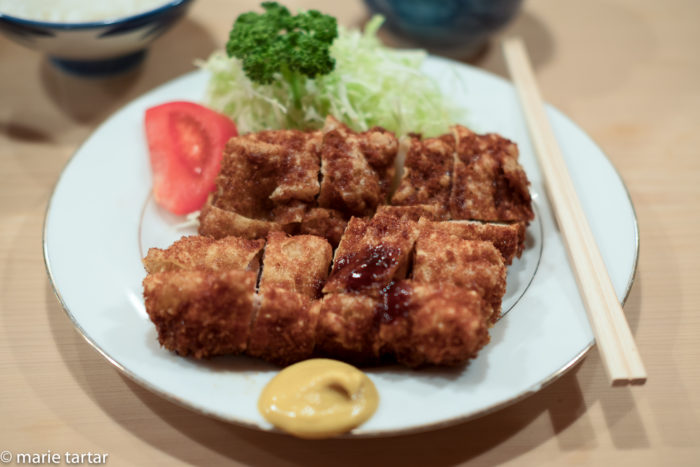
Tonki, a Tokyo Meguro district restaurant, devoted to just one dish: tonkatsu, served with a dab of mustard and cabbage salad
Our only decision is whether to go with the fattier or leaner pork, or combined with onions. We sampled all 3 that night. Although I think most people prefer the fattier version, we liked the leaner and the with onions option. A bent-over, senior appearing staff member was doing the slicing the night we were there. He must have fingers of leather, for he sliced the tonkatsu with great precision, moments after it had been removed from the hot oil. Despite the omnipresence of oil, the place was spotless and the air fresh and filled only with delicious aromas. Gochizo sama deshita! It was a feast, and a bargain at that, at $21/person.
It was also fun becoming better acquainted with Yukiko and Takeshi. We had met them both once years before, when they were visiting San Diego, and Deborah hosted an evening salon, at which we saw some of Takeshi’s images. Yukiko is the English speaking public half of this partnership. I suspect Takeshi is relatively quiet, even among Japanese speakers.
Sunday, November 6, 2016
I had hoped to revisit Tsukiji, the famous fish market, this morning, but checking their website the night before, realized they are always closed on Sundays. In the apartment, there was a spring issue of Time Out magazine, with a series of Tokyo walks outlined. One caught my attention, to Nakano. Years ago, the New York Times Sunday magazine profiled a coffee house, Bar Zingaro, started by several Danish mid-century enthusiasts, who collaborated with the artist Murakami. Several years after mentally filing this away in the “That’d be fun to visit someday” category, we were in New York and went to a design show with our friends Lenny and Arlene, who split time between Del Mar and NYC. One of the vendors we chatted with turned out to be these Danish Fuglen Tokyo coffee house friends. This, of course, strengthened my resolve to seek it out, shifting it to the “next time in Tokyo” bin in my priority list. The article profiled the Nakano Broadway as a destination to satisfy one’s inner otaku (geek) and we found a lot to satisfy our photographic geek selves.
Even the first steps out of Nakano Station, into a particularly pop art-y shopping arcade (shotengai) presaged the coming attractions:
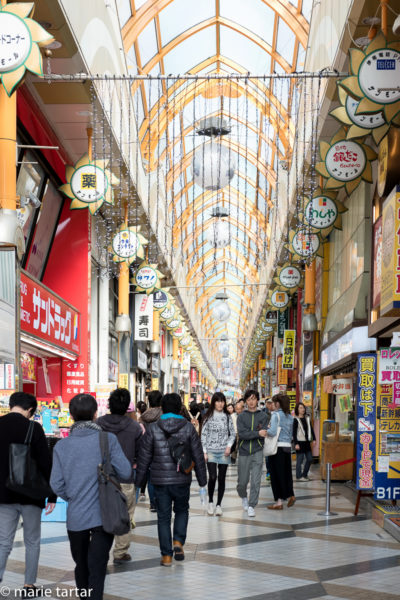
Nakano station at one end, Broadway Nakano at the other, this shotengai (shopping arcade) crosses cathedral with kitsch; I particularly loved the pop art-y flower signs
Broadway Nakano was our destination, a large shopping emporium, catering to anime and manga, cos play and aficionados of every kind of collectible. There are bookstores, galleries, toy stores, and specialty collectible stores, for both children and adults. Mandarake, Japan’s largest collectible dealer is headquartered here and represented in many different outlets on multiple floors. We arrived early enough on this Sunday morning that it was relatively quiet at first, before most of the stores opened at 11 am. This gave us a chance to shoot the storefronts with abandon, and they were an interesting lot.
Towards 11 am, children with their parents in tow started to line up in front of soon to open toystores.
Dolls, figurines and robots of every persuasion could be found in one or another store, not to mention action figures, accessories and other items of presumed obsession to somebody.
Even we found collectibles we couldn’t resist, although we told ourselves we were buying them for gifts. We did manage to give most of them away, but we had a lot of fun looking through wonderfully colorful and animated celluloid prints or “cels” for sale, from anime films. The best souvenir ever: flat, light, unique and not horribly expensive.
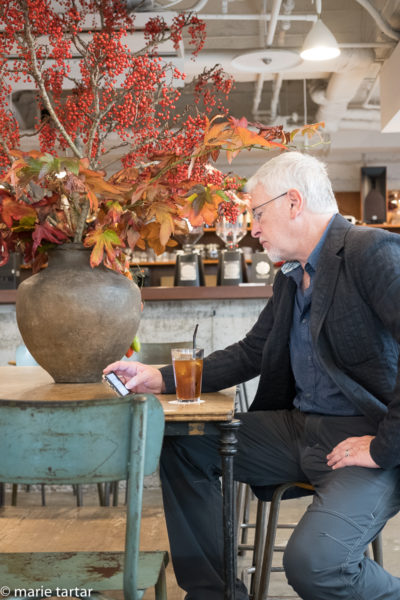
The original reason for trekking up to Nakano Broadway was to check out this uber-hip, Murakami decorated coffee shop, Bar Zingaro
We spent so much time there we didn’t end up with but 45 minutes at the Modern Art Museum, so missed out on the Thomas Ruff show, ducking instead into the free permanent collection. Our cab ride to Rinko Kawauchi’s studio, only 3 miles away, was surprisingly expensive, at almost $30, requiring steering around the Imperial Palace Garden grounds. Because of the size of the studio space, we had been divided into 2 groups, so were surprised to find ourselves alone with Deborah, Stephanie and Rinko, most of the 3:45 group having jumped the queue and already come and departed. This might have been good for us, had the welcome been warmer, but it was surprisingly tepid. Her photographic oeuvre is snippets of time and slices of life, transitory moments, in interesting juxtapositions. I found her books, in which the sequencing and pairing are important elements, to be far more compelling as objects than the actual individual works we saw. Asked about many images with obvious technical problems, she implied she embraces accidents, saying “It’s a gift.”
While we were there, two representatives of a photographic group came to collect Deborah. She was scheduled to speak to their members and to do 5 portfolio reviews. Yukiko and Takeshi were accompanying her, as was Stephanie. Yukiko would serve as translator, a role she plays for Takeshi. They were kind enough to give us a lift to Ginza.
We were early for dinner, so there was time to shoot the blazing commercial lights, as well as to try on fantasy clothing, including multiple capes, in Commes des Garçons. The only item I was tempted by was a $500 fake fur hat from an English hatmaker, but decided our luggage was full enough and that somehow, I could manage to carry on without it.
Ten-Ichi is another Tokyo institution, known for tempura. Unlike our institution of the prior night, this is a pricy one, with set menus, the cheapest of which was $140 per person, not including alcohol. I knew the name from my Japanese Pimsleur course (Ten-Ichi-ni, ikimasho! Let’s go to Ten-Ichi!), so was pleased to try it. James and Jill, and long-time MCASD director Hugh and Faye, were fun companions for the evening in a small private room. We were seated around a counter, with feet wells, behind which prawns, squid, asparagus, green beans and other vegetables were serially plunged into the oil. Our tempura impresario instructed us which were to be salted, eaten with salt and lemon, or dunked into tempura sauce with grated daikon radish. Gochizou sama deshita! Another fried and delicious feast, again with pickles, miso soup with clams, rice, and finished off with fresh fruit wedges in another room. Guessing at the restaurant’s name’s significance…ten=heaven, ichi=one…#1 heaven?! It was delicious. Astute observers may notice a striking lack of pictures of the tasty morsels, which were consumed so quickly immediately after presentation and adornment with the right condiments.

Ten-Ichi, ikimasho! Let’s go to Ten-Ichi! Although there are many outposts now, the Ginza original dates to 1930.
Monday, November 7, 2016 started with a can of sardines, figuratively speaking. Not for breakfast, but en route to Shinagawa station to catch the shinkansen to Kyoto. We left the house for Meguro station at 8 am, and needed to negotiate only 2 stops on the JR Yamanote line to get to our departure station. I was really happy with myself for having realized there was no point in going all the way to Tokyo station when we could catch the same train closer to home, but was to rethink our decision to brave the train during commuting hours. We experienced first hand a literal crush of humanity, all determined to crowd into the next, already full to bursting train. We let one pass that looked crammed full and were amazed to see a woman park herself in the entry, and grabbing an overhead hold, use her whole body to lever herself into the train, squeezing the crowd further into the train, which already appeared at capacity.
This left us first in line to enter the next train. But standing upright, with luggage (a rolling carry-on size bag each) and with backpacks on, it was hard to keep your feet under you. Steve had an overhead hold, but I didn’t and was initially held up by the crowd itself, a very dubious position. Thankfully, we only had 3 stops to go and I secured an overhead purchase after the first stop as the crowd shifted and rearranged slightly. A veritable cultural experience, but one I wouldn’t care to repeat. I’ve never seen those gloved station agents charged with pushing more people into the train. Perhaps that isn’t done anymore, as it appeared the crowd already knew very well how to fill a car completely. Note to self: next time, take a cab to the shinkansen station.
Amazingly, we made it to the shinkansen platform with a minute to spare and ended up boarding the actual 8:40 am train I had targeted (via the indispensable Hyperdia app) the night before. We were a little shrink-wrapped and chagrined by our sardines-in-the-tin train experience, but…we were en route to always delightful Kyoto.
Next stop…Kyoto, then on to Naoshima Island…eventually!
-Marie

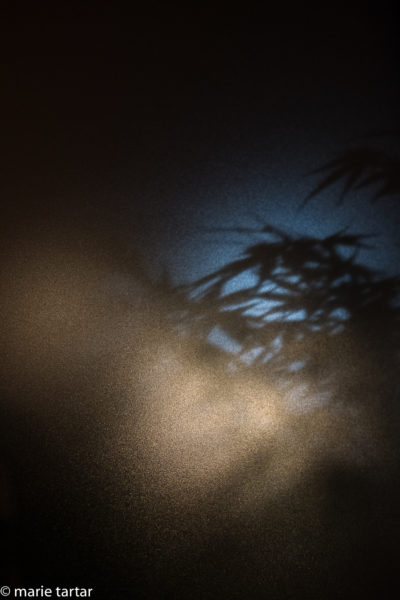
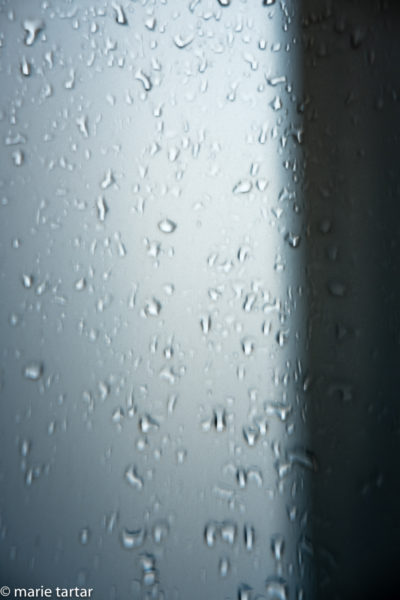
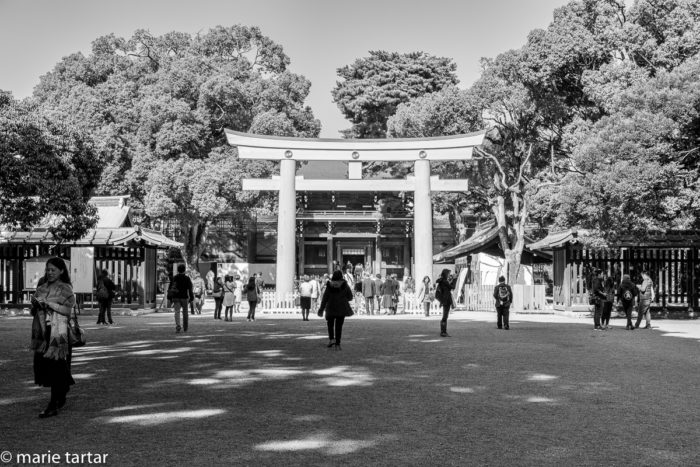
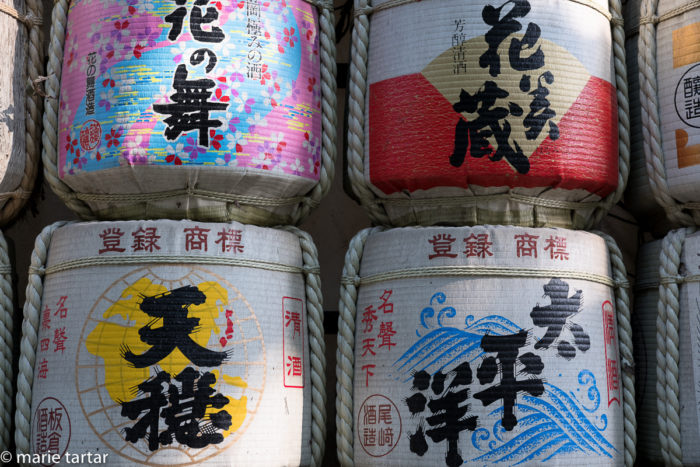
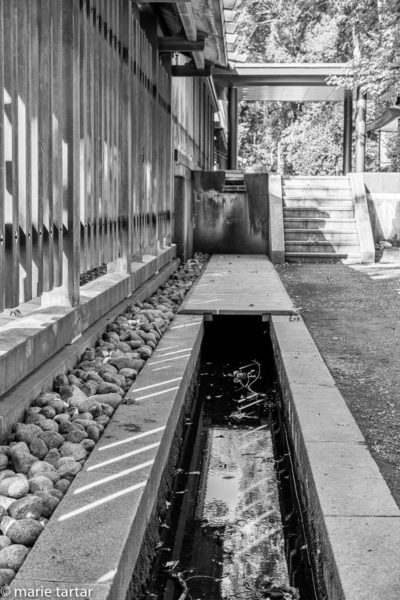


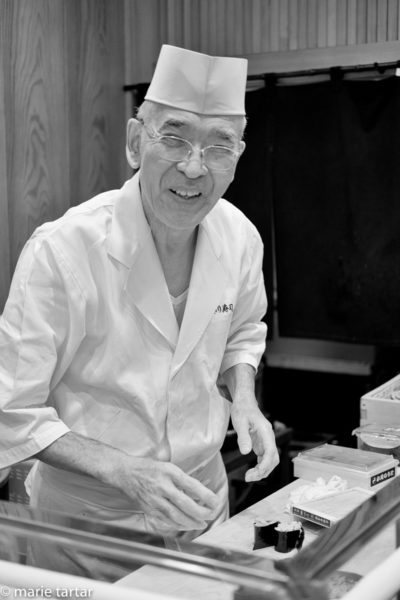
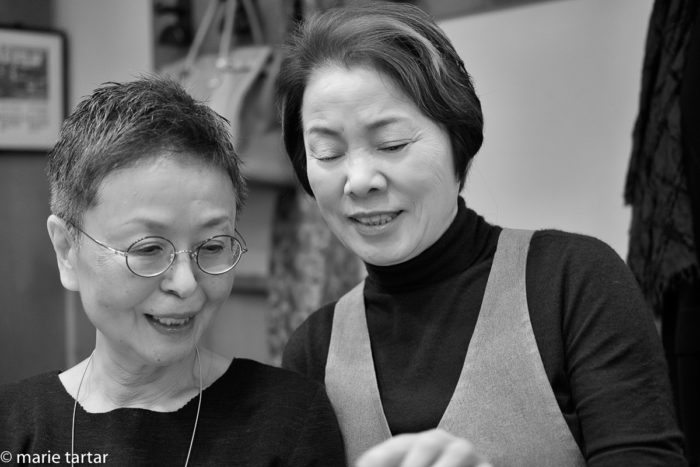
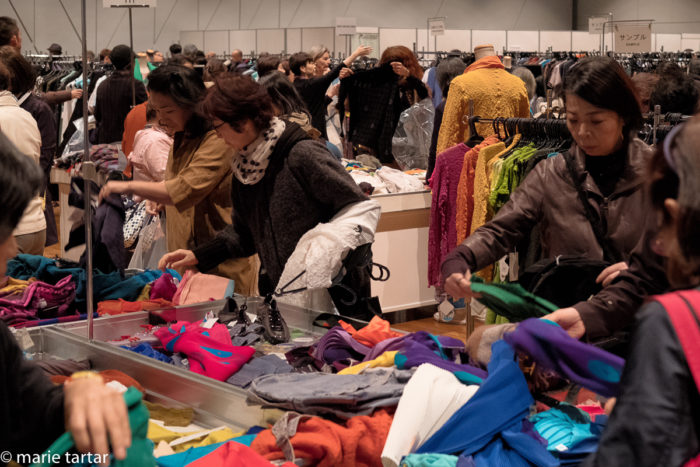
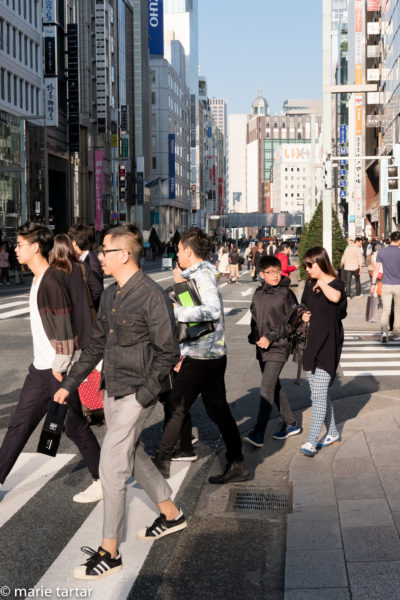
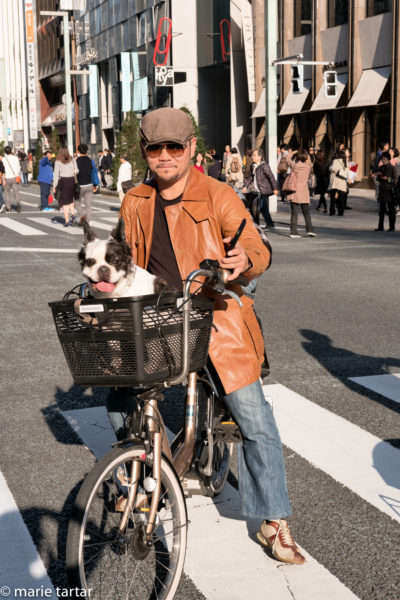
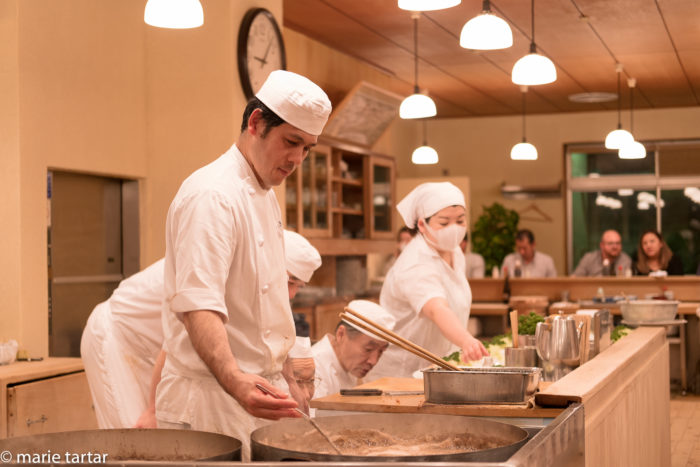
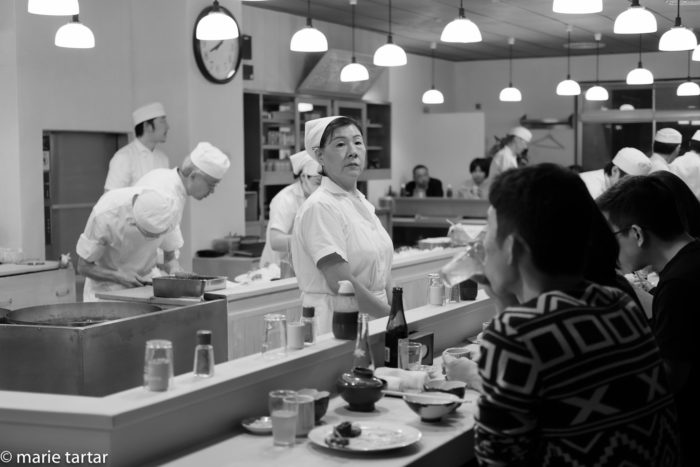
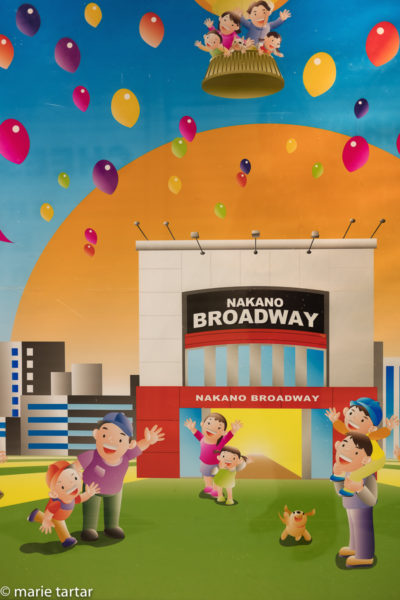
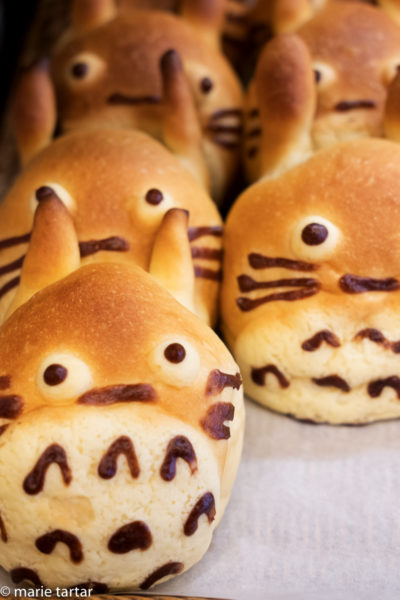
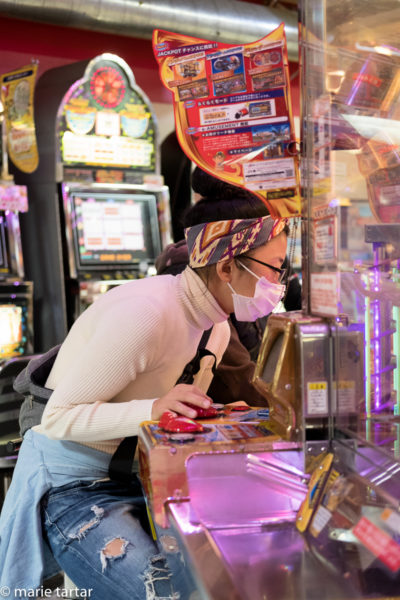
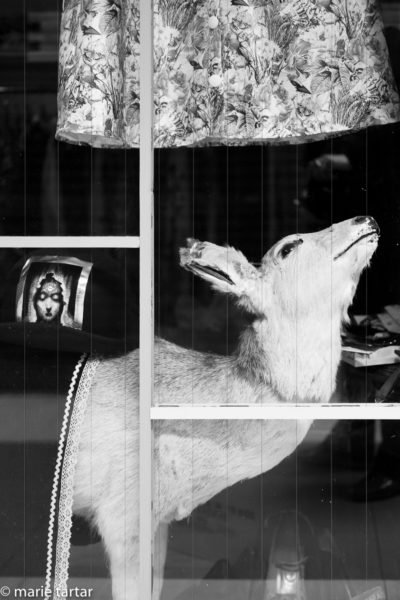

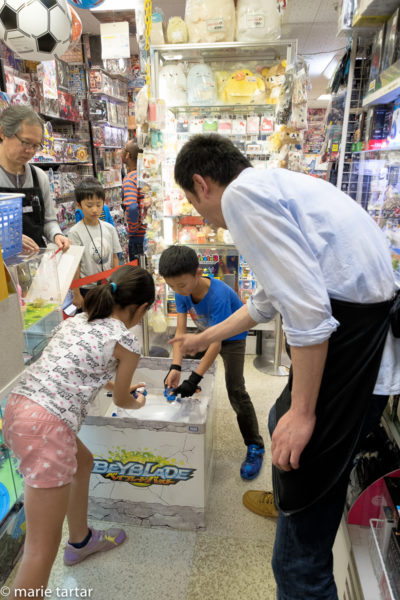
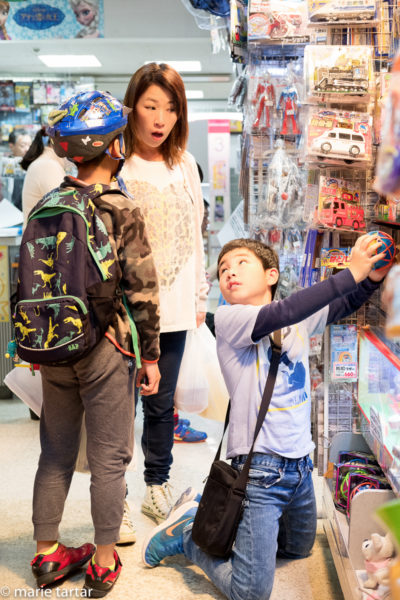



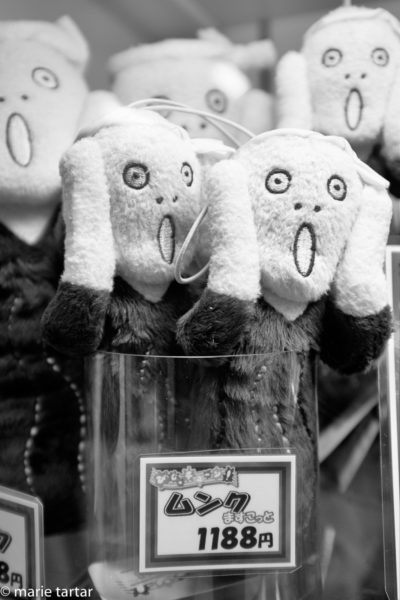


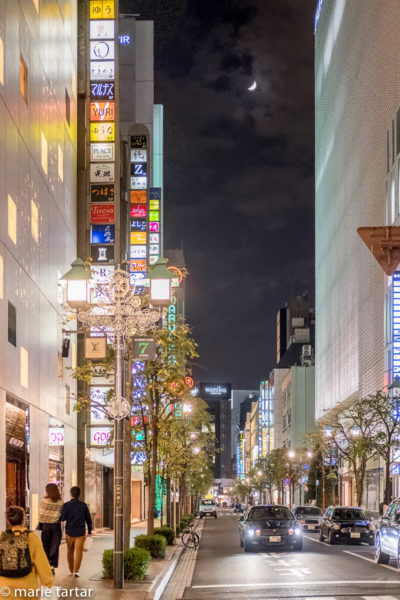
It’s been a long time since we were last in Tokyo – although it was only a skosh away from Guam. Your blog brought it back and gave it life again. Thanks.
Thanks for reading, Richard! Lots of corners yet to explore!
-Marie
Fun read, Marie. I will be watching for your new Issey Miyake attire.
The perfect garments for middle age and travel! Machine washable, unwrinkle-able, indestructable and hides all manner of contours needing smoothing!
I had an extra 30 minutes at the gym today and filled it with your delicious Tokyo sojourn. Thanx for that. I’ve been watching Midnight Diner: Tokyo Stories on Netflix and your tales could fit right in!
I watched Midnight Diner on the plane home-twice, I loved it so much!
-Marie
Dzurui! Unfair! Your photos make me miss Tokyo too much. Are you guys at all interested in attending the Tokyo 2020 Olympic Games? I plan to.
Great idea! Summer Olympics? We have not been to the Olympics….wheels are turning…
-Marie